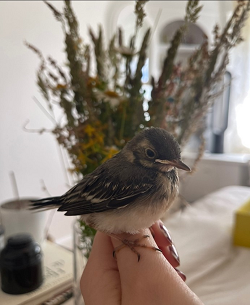Ecoliteracy Principles, the Plasticene, and People Power
Earth Day 2024: Classroom Activities for Multilingual Learners of English

Earth Day is 22 April, a day when over one billion people across the world celebrate and honor our common home and participate in activities to protect this beautiful planet and all species. For those who are inspired and motivated to do so, here is a calendar of daily themes and activities for the month of April!
In honor of Earth Day, I want to share some key principles and practices of ecological literacy, drawing on the work of the Center for Ecoliteracy. In this blog, I focus on the first three of these principles, with examples from my own experience, as well as from other teachings:
-
- Developing empathy for all life forms
- Embracing sustainability as a community practice
- Making the invisible visible
- Anticipating unintended consequences
- Understanding how nature sustains life
I will refer back to these throughout the blog, but encourage you to think about how you might teach and apply these in your life and work, while offering my own suggestions.
Planet vs. Plastics & Making the Invisible Visible
The theme for Earth Day 2024 is Planet vs Plastics. As such, it is the perfect opportunity to teach about the Earth generally and plastics specifically. I recommend studying the Earthday.org website to understand something of Earth Day and this year’s theme as well as to learn about any number of topics. The website contains reports, initiatives, project ideas, quizzes, and fact sheets, all of which could be used as content and language lessons.
➤ Classroom Activity
To understand what students already know and think, you can develop an anticipation guide about plastics or whatever content is the focus of this Earth Day in your class. An anticipation guide can be a series of T/F questions that serve as a cognitive organizer for additional learning to come. Questions for the anticipation guide can come from the fact sheet and other information on the site. For example: True or False — Earthday.org is calling for a 60% reduction in plastic production by 2040.
Plastics are found in the deepest parts of the ocean; at the poles and highest mountains; in the products we use, the food we eat (including seafood!), and our bodies, including in breast milk. In fact, due to the ubiquity of plastic across the planet, it has been said that this era will show in our geological record, and some are already calling this age of plastic the Plasticene. Becoming aware of plastics, their origins (e.g., litter and trash from land ending up in rivers and ultimately the ocean), and their impacts is an example of the ecoliteracy principle making the invisible visible.
A question from the quizzes section of the Earth Day website asks: What happens to plastic when left in the environment? The correct answer is that it never fully goes away, it just breaks into little pieces, or microplastics.
A troubling example of plastic pollution is found when ocean currents carry debris to a vortex, where massive amounts of plastic converge in what is known as the Great Pacific Garbage Patch. The link to this site has fully detailed lesson plans for teaching about this trash vortex and a wealth of additional content and teaching ideas, such as word walls and activities linked to social-emotional learning.
➤ Classroom Activity
You can use this tool with your learners to track a piece of plastic from anywhere in the world (e.g., where you are teaching) to where it is likely to end up in the ocean.
Solutions-Based Thinking: Embracing Sustainability as a Community Practice
Young people all over the world are working toward building a more sustainable and socially just world. These include teens from the Netherlands and Ireland who invented ways to clean up larger pieces of ocean plastic and microplastics, respectively. Each year an amazing new group of young awardees from across the globe is recognized by the North American Association for Environmental Education as their 30 Under 30. These are wonderful examples of the ecoliteracy principle of embracing sustainability as a community practice.
➤ Classroom Activity
As a class, read the bios of several awardees and learn about their projects. Then, have students (in pairs or individually) study the bios of one or more other awardees and share what they learned with the class, including identifying on a map where the awardee is from. Next, students can form larger groups and design a unique “30 Under 30” project with a written summary and group presentation to the class, followed by discussion and feedback. The class can then choose one group’s project to work on implementing as a class.
Place-Based Learning & Developing Empathy for All Life Forms
We have heard it said that every day is Earth Day. Cultivation of ecoliterate awareness is as easy as noticing what is in our immediate, everyday environments. An example of noticing was relayed by my daughter who went for a walk with her four-year-old son about a block from my home, where there is a park with a short trail. They came upon a small burrow in the dirt with a covering over the top of the hole. My grandson, playing, destroyed the entrance covering and the hole. Later, his mom did some research and realized what they had seen was the home of a trapdoor spider, who constructs a burrow and a trapdoor out of soil, vegetation, and webbing. She was shocked to discover that depending on the species, the trapdoor spider can live up to 20 years! Understanding the engineering ingenuity and lifespan of this small creature stunned her and generated a kind of reverence, as well as regret for her son’s unwitting destruction of its home.
 Another anecdote of noticing in one’s immediate environment happened while I was teaching an online class during the pandemic. During class one day, a student who was living in Paris saw two tiny birds tumble past her window as they fell from a nest above. She rescued the injured chicks and one survived. When fully healed and ready to be set free, the little bird hesitated, preferring to stay near her, but slowly gained more distance and eventually flew away, apparently ready for its independence. She reported bonding deeply with the bird, the photo of which she has allowed me to share here. These are all examples of noticing what is there in front of us — this is place-based experiential learning. These are also examples of the ecoliterate practice of developing empathy for all life forms, where often the more we experience and know about a species, the more we care about it and want to protect it.
Another anecdote of noticing in one’s immediate environment happened while I was teaching an online class during the pandemic. During class one day, a student who was living in Paris saw two tiny birds tumble past her window as they fell from a nest above. She rescued the injured chicks and one survived. When fully healed and ready to be set free, the little bird hesitated, preferring to stay near her, but slowly gained more distance and eventually flew away, apparently ready for its independence. She reported bonding deeply with the bird, the photo of which she has allowed me to share here. These are all examples of noticing what is there in front of us — this is place-based experiential learning. These are also examples of the ecoliterate practice of developing empathy for all life forms, where often the more we experience and know about a species, the more we care about it and want to protect it.
➤ Classroom Activity
English language teachers can engage students with this sort of place-based experiential learning by going tidepooling (if by a coast) or taking a nature walk with multilingual learners of English. Have students write in a journal and/or sketch what they observe and then regroup to discuss. You may want leverage the power of apps to identify and study the local flora and fauna observed while on the hike or tidepooling.
Best Practices
As always, focus on language!
-
- Have language objectives prior to any activity.
- Do word study, which may include understanding terms and concepts such as the Plasticene, and the Great Pacific Garbage Patch.
- Study meanings of new words, such as debris and vortex, and help students with the morphology, prefixes, and meaning of words such as photodegradation and microplastics.
In my next blog, I will introduce six principles of earth education, which have been referred to as a new “common core” and in which earth-centric leadership tops the earth education pyramid. I’ll share ideas to encourage us as teacher leaders and curricular innovators to embrace ecoliteracy. Until then, Happy Earth Day!

